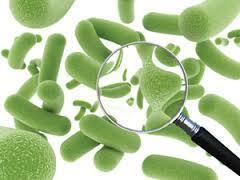Aqua - Yeast Beta Glucan

Aqua - Yeast Beta Glucan Price And Quantity
- 50 Kilograms
- 350 INR
Product Description
Role of Beta-glucans in aquaculture
Immunostimulants are chemical compounds that activate white blood cells (WBC) and may deliver fish and animals more resistant to infections pathogens.Immunostimulants have been used as feed additives from past many years in aquaculture sector and imagining modern aquaculture with out the use of injectable vaccines against different pathogens causing diseases is impossible. Beta-glucans is an important immunostimulant among which yeast Beta-glucan has been widely used in aquaculture sector. They are found to be highly beneficial in reducing the mortality due to opportunistic pathogens in juvenile fish also, in preventing viral diseases, in enhancing disease resistance to parasites and farmed shrimp, in increasing the efficacy of anti-microbial substances and vaccines19.
Dietary feed supplementation with both natural and commercial Beta-glucans has shown improvement in health, growth and general performance of different animal groups, including farmed shrimp, fish and other land animals. Fish growth has been enhanced with the use of (EcoActiva) a commercially available Beta-glucan orally in Pink snapper4; Beta-glucan in Rohu15; Beta (1,3) glucan in Large yellow croaker1. Beta (1,3) glucan enhanced the protection in case of yellow croaker against Vibrio harveyi1, Beta(1,3) yeast glucan against Aeromonas hydrophila in Asian catfish14. Beta (1,3) glucan from Saccharomyces cersvisiae along with bacterial LPS (Lipopolysaccrides) induced resistance against Aeromonas hydrophila in carp27: Beta (1,3) glucan against Edwardsiella tarda in Rohu24, yeast Beta (1,3) against white spot syndrome17 when injected intramuscularly and Beta-glucan from Schizophyllan against RV-PT virus10 in Kuruma Shrimp. Many Scientific experimental reports have shown that Beta-glucan as feed supplement enhance the survival rate against White Spot Syndrome in Black tiger Shrimp8,3 and yeast Beta (1,3,) and Beta (1,6) glucans as an adjuvant in Atlantic salmon23, Beta(1,3) glucan in Atlantic Salmon yellowtail12 and mushroom glucan in Catla11 when injected intaperitoneal. Reports with enhanced antibody response with the use of mushroom glucan in Catla11, Beta (1,3) and Beta (1,6) glucan in Asian catfish14, and Beta (1,3) glucan in Rohu25 are available. Effect of Beta-glucan in enhancing resistance to pathogen was studied in immunocompromised fish. Feeding Beta (1,3) glucan to aflatoxin immuno compromised rohu (Labeo Rohita) significantly enhanced non-specific immunity againstEdwardisella tarad24,25 and in Nile tilapia against S. iniae8. Supplementation of commercially available Yeast and yeast cell components (YYS) containing Beta-glucan in feed showed no effects on the growth, survival, resistance and protection against E. ictaluri in channel catfish in juvenile Nile tilapia against S. iniae and against E.tarda and S. iniae26,21 respectively. Apart this reports with Beta-glucans enhancing phagocytic activity, haemagglutination, blood leucocyte number, antibod response, lysozyme and ROS production in fishes when supplemented in the feed are available.



 Send Inquiry
Send Inquiry Send SMS
Send SMS